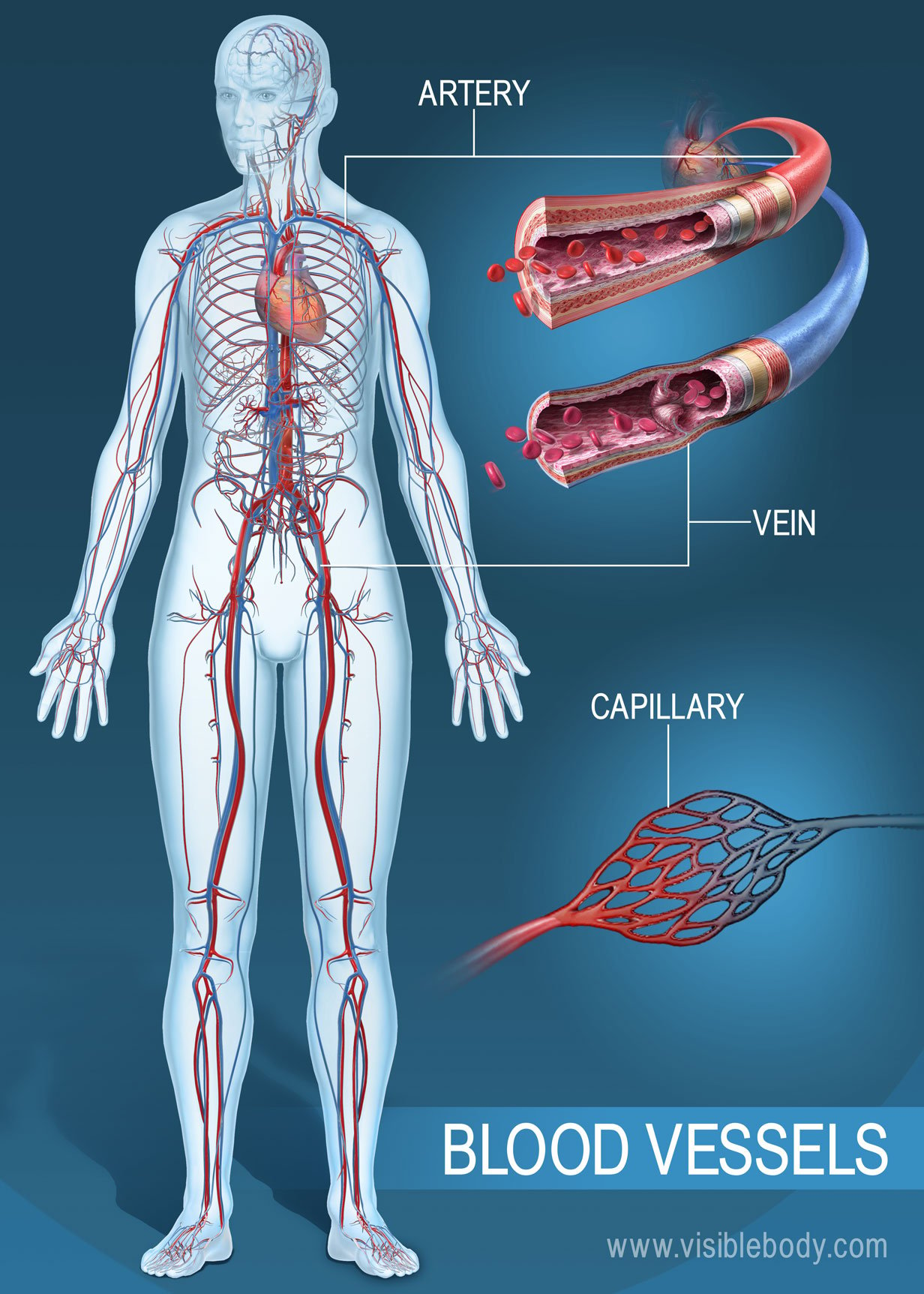Which Best Describes the Blood Flowing in a Vein
Pulmonary veins take oxygen-rich blood to the organs and tissues of the body and then back to the heart. The job of the hepatic veins is to move this blood out of your liver.
The movement of blood from the aorta through arteries.

. The velocity of blood flow is ___. It moves toward the heart apex. Pulmonary veins bring oxygen-poor blood from lung capillaries toward the heart.
There is an occlusion present. Arrange the structures in the following list in the order that blood will encounter as it flows from the output side to the input side of the cardiovascular flow circuit. Can you check my answer.
So it is seated within the innermost layer tunica intima and is in direct contact with the blood flow. Left ventricle to aorta to systemic circulation to inferiorsuperior vena cava to right atrium to right ventricle to pulmonary artery to lungs to pulmonary veins to left atrium Right ventricle to aorta to systemic circulation to interiorsuperior vena cava to left atrium to left ventricle to. Select the option that best describes the order of blood flow through the heart.
Smooth muscle cells surrounding the veins contract to increase venous pressure. Answer 0 shyrellerushing04 Answer. Which best describes the blood flowing in a vein.
Pulmonary veins take oxygen-poor blood to the lungs where the blood can become oxygenated. Which best describes the blood flowing in an artery. A blood flow that leaves the left side of the heart via the pulmonary arteries enters the lungs replenishes oxygen into the blood and returns blood to the right side of the heart via the pulmonary veins B blood flow that leaves the right side of the heart via the pulmonary arteries enters the lungs replenishes oxygen into the blood and returns blood to the left side of the.
Jamie Nov 20 2017 Agree PsyDAG. The arteries have three layers and the innermost layer is called the tunica intima or the tunica interna. Contracting skeletal muscles compress adjacent veins to increase venous blood flow.
Pulmonary veins take oxygen-rich blood to the organs and tissues of the body and then back to the heart. It contains no white blood cells. Pulmonary veins carry oxygen-rich blood from lung capillaries to the heart.
The movement of blood from the pulmonary trunk through capillaries into the pulmonary veins. Pulmonary veins take oxygen-poor blood to the lungs where the blood can become oxygenated. 1heart-capillaries-veins-arteries-heart 2heart-arteries-veins-capillaries-heart 3heart-arteries-capillaries-veins-heart 4heart-veins-capillaries-arteries-heart I think 3.
Which of the following statements best describes the reason why there is an absence of color flow in the vessel on the image. Which statement best describes blood flow through the pulmonary veins. It contains no red blood cells.
Which statement best describes blood flow through the pulmonary veins. The best explanation for what do arteries veins and capillaries do is that they A - arteries normally carry oxygen-rich blood away from the heart veins on the other hand generally carry oxygen-depleted blood back to the heart. Pulmonary veins carry oxygen-rich blood from lung capillaries to the heart.
The US beam is parallel to the motion of the blood so no flow is detected. Coronary sinus inferior vena cava superior vena cava pulmonary semilunar valve separates the right ventricle and the pulmonary trunk aortic semilunar valve separates the left ventricle and the aorta tricuspid valve separates the right atrium from the right ventricle bicuspid valve. At any given time your liver holds about a pint of blood or about 18th of your bodys total blood.
2 See answers Advertisement CauseLife C. Blood vessels in the skeletal muscle dilate during exercise to increase blood flow. A in direct proportion to the total cross-sectional area of the blood vessels b slower in the arteries than in capillaries because arteries possess a relatively large diameter c slower in veins than in capillaries because veins have a large diameter.
Abdominal compression and thoracic expansion during inhalation causes increased venous flow. The US beam is perpendicular to the motion of blood so no flow is detected. Now endothelium is the innermost lining of a blood vessel formed of specialized squamous epithelium.
Venous insufficiency is most often caused by either blood clots or varicose veins. It moves away from the heart. The right atrium receives blood from which three vessels.
The movement of blood into the coronary arteries through capillaries into the coronary sinus. Capillaries however deliver blood to individual cells. It is oxygen poor.
The superior vena cava primarily drains oxygen-poor blood from the body above the diaphragm while the inferior vena cava drains oxygen-poor blood from areas below the diaphragm. Which statement best describes blood flow through the pulmonary veins. Which of the following describes the path of blood between the heart and the lungs.
It moves away from the heart Arteries carry blood away from the heart while veins carry blood to the heart. In healthy veins there is a continuous flow of blood from the limbs back toward the heart. The blood then enters the individual vessels of a second capillary bed each of which is called a peritubular capillary a capillary that surrounds the proximal and distal convoluted tubules in the kidney or to the vasa recta and then travels through a network of venules that converge into the cortical radiate veins and then the arcuate veins.


Comments
Post a Comment